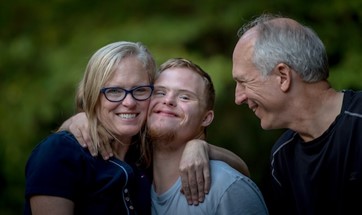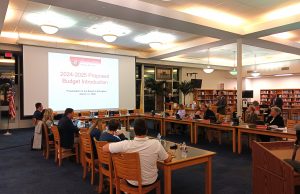Kathleen Vermillion works as a Nonprofit Administrator and Recovery Professional. In the following article, Kathleen Vermillion discusses the transformative impact of disability rights advocacy on the concept of universal design, reshaping environments to be more welcoming, accommodating and inclusive for everyone.
“Disability need not be an obstacle to success.” ~Stephen Hawking
This is exactly what disability rights advocates champion. Their passionate work involves raising awareness and educating the public about disability issues, advancing for rights, fighting for inclusive policies, and working to provide persons with disabilities (PWDs) equal access to public spaces, technology, employment, and education.
According to the World Health Organization, there are about 1.3 billion individuals experiencing a significant disability – that’s 1 in every 6 people, representing an estimated 16 percent of the world’s population.
With such a substantial number of PWDs worldwide, the efforts of disability rights advocates to fight for equality greatly impact how disabled people live, work, and participate in society today.
Below, Kathleen Vermillion explores the various initiatives that disability rights advocates lead to promote inclusive policies, spaces, and technology that benefit people of all abilities.
Kathleen Vermillion Highlights Inclusivity Crusaders
 Disability Rights Advocates are part of a diverse community that is passionate about advancing the rights and interests of persons with disabilities while fighting against discrimination.
Disability Rights Advocates are part of a diverse community that is passionate about advancing the rights and interests of persons with disabilities while fighting against discrimination.
Kathleen Vermillion notes that these advocates can be:
- Individuals
- Parent and Family Advocates
- Educational Advocates
- Online Activists
- Community-Based Organizations
- International Organizations
- Non-Governmental Organizations (NGOs)
- Legal Advocacy Groups
- Professional Associations
- Government Agencies
Some of the more widely-recognized organizations include the Disability Rights International, the American Association of People with Disabilities (AAPD), and the National Council on Independent Living (NCIL) who are prominent for the work that they do and the things thy have achieved.
Ability in Disability
• Policy and Legal Advocacy
Kathleen Vermillion notes that disability rights advocates, who range from individuals to international groups, often actively engage with public institutions, government sectors, and policymakers to push for the development and enforcement of laws and policies that guarantee the protection of PWD rights.
This encompasses accessibility standards, anti-discrimination laws, and equal opportunity legislation. One good example is The Americans with Disabilities Act (ADA), a law that prohibits discrimination against the disabled in areas such as communications, transportation, public accommodations, access to government programs and services, and employment.
 • Employment Inclusivity
• Employment Inclusivity
In the United States, PWDs are the poorest, least educated, and least employed minority.
As per the American Civil Liberties Union (ACLU), more than two-thirds of disabled Americans from ages 16 to 64 are unemployed, although a Harris poll stated that 79 percent of them were actively looking for a job and want work.
Kathleen Vermillion explains that aside from promoting policies that help PWDs find and maintain jobs, advocates also fight for workplace inclusivity which includes the provision of accessible workplaces and reasonable accommodations. Advocates also work to reduce discrimination in the workplace.
• Access to Quality Education
Another important initiative of advocates is access to quality education. They promote practices and policies that encourage educational institutions to have an inclusive learning environment, providing accommodations and support for people with disabilities, such as accessible classrooms, assistive technology, specialized educational materials, and trained staff to assist disabled students.
• Availability of Assistive Technology
Kathleen Vermillion explains that without assistive technology, disabled individuals would have a difficult time keeping up with today’s modern world. Technology is essential for many aspects of life like school, work, social life, and more.
Disability rights advocates push for the development of more accessible technology like assistive devices which includes voice recognition software and screen readers. They also advocate for digital content and websites to be more accessible and PWD-friendly.
• Transportation and Infrastructure Inclusivity
Being able to travel and move freely in public is important for the disabled, that’s why PWD-friendly infrastructure and accessible transportation should be widely available. Advocates promote this, making sure that sidewalks, public transportation, and public infrastructure are built in a way that accommodates people with disabilities.
Kathleen Vermillion notes that overall, DRA’s foster the development and provision of important elements that would make the lives of the disabled easier and more convenient, as deserved. Advocates fight for universal design, ensuring that PWDs have access to inclusive products, spaces, and technologies.
The tireless efforts of these passionate advocates have already made a huge impact on the lives of minorities, but more is still needed to be done to achieve total inclusivity and equality. Kathleen Vermillion notes that it’s a long, hard, and lonely fight; but it’s a fight that disability rights advocates will never get tired of.



 • Employment Inclusivity
• Employment Inclusivity


